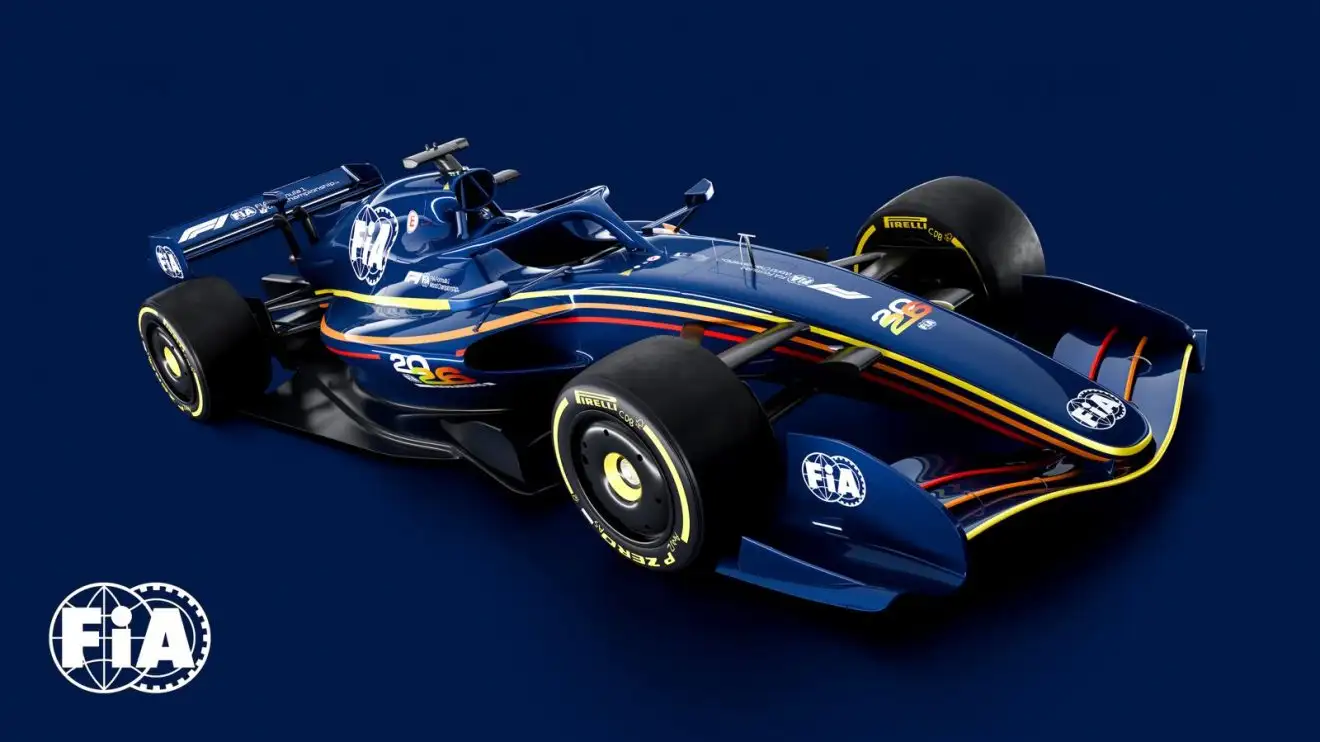Extreme F1 2026 brake systems uncovered as first design details emerge

F1 2026 model car.
The next generation of F1 cars could bring with it some extreme braking systems.
All-new chassis and power unit regulations will transform the sport next season with teams already feverishly working on the design of their new cars.
F1 2026 hybrids trigger extreme rear brake designs
From F1 2026, there will be an increased use of hybrid energy from the 1.6-litre turbocharged power units.
The sport will do away with the heat recovery system, which was deemed too expensive and complicated as the sport worked to attract new manufacturers.
Regeneration will continue to happen through the MGU-K, with the rear axle playing a crucial role in energy harvesting, which in turn has a significant impact on brake design.
“In the rear axle, we have seen extreme choices in the sense of disc dimension,” Andrea Algeri, Brembo’s F1 customer manager, told The Race.
“They are very small, compared to the current ones in terms of diameter, but also in thickness.
“So it means that they believe that on the rear axle they are basically not braking at all or only in a few cases.”
Requirements for the minimum braking hardware for F1 2026 are laid out in the technical regulations, which stipulate must have a stopping power of -2500Nm of torque per wheel, without the use of other systems (such as MGU-K).
However, while the hardware must be on the car, there is freedom as to how those systems are used.
“What we are expecting is that the brakes will not be used at all in some corners because the braking is done with other systems,” Algeri said.
“Then, on the other side, there will be some corners where they are very, very stressed. So you have to be prepared to face this wide range.”
More on F1 2026 rule changes
👉 F1 2025 v F1 2026: Nine key questions ahead of huge regulation changes
👉 F1 2026 tech analysed: The future of overtaking and biggest car advantage identified
As a key supplier, Algeri has some insight into what the teams are doing, courtesy of the design brief Brembo has received from each.
Beyond what can be extrapolated from that scope, he has little further knowledge of just what teams are planning.
“We have seen different approaches across the teams,” he explained.
“It’s mainly on the rear, because the rear axle design depends on how they design the power unit, the energy recovery, and their strategy and so on – and we are a bit blind in this sense.
“But we have received a target from the teams and it says, ‘OK we want to go with this kind of braking torque, so we would like to have this kind of dimension. So let’s design the best possible braking system within these limits’.
“But the reason why they have some of these numbers is not clear to us. We have seen some outliers that will be very clever solutions if they are right. Otherwise, they will have to redo the braking system after a few tests or a few races!
“We are trying to be prepared in this case. But it’s pretty curious, and it’s for sure a new challenge after many years.”
The introduction of hybrid power in 2014 brought with it a revised focus on the braking systems, especially across the rear axle because of the energy recovery.
However, when those hybrid systems have experienced issues, it has typically proven race-ending.
Read next: What Sergio Perez can offer Cadillac in F1 return revealed by former boss

